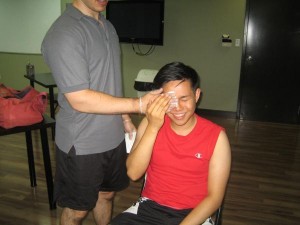A foreign object in the eye is anything that enters the eye from outside the body. Remember that it is any object that does not essentially belong there such as dust particles or metal shards. Once a foreign material enters the eye, it is likely to affect the cornea or conjunctiva.
The cornea is the transparent dome that covers the front part of the eye while the conjunctiva is a fine mucous membrane that lines the white part of the eye or sclera.
Any foreign object that lands on the front part of the eye will not go behind the eyeball but can scratch on the cornea. Take note that these injuries are usually minimal, but some objects are capable of causing infection or even impair vision.
What are the indications?
If an individual has a foreign object in the eye, symptoms are likely to occur such as the following:
- Eye pain
- Feeling of discomfort or pressure
- Sensation that there is something in the eye
- Excessive blinking
- Excessive tearing
- Redness or bloodshot eye
- Light sensitivity or pain when looking at light
Cases in which a foreign object penetrates the eye are considered rare. In most cases, the objects that enter the eye are caused by high-speed impact such as an explosion. The foreign objects that penetrate the eye are called intraocular objects. Other indications of the presence of an intraocular object include drainage of fluid or blood from the eye.

What are the causes?
Various foreign objects can enter the conjunctiva of the eye due to mishaps that occur during daily activities. The usual types of foreign objects include the following:
- Dried mucus
- Sand
- Dirt
- Eyelashes
- Cosmetics
- Sawdust
- Contact lenses
- Glass shards
- Metal particles
The sand and dirt fragments usually enter the eye due to the wind or falling debris. Take note that sharp materials such as glass or metal can enter the eyes after an explosion or accidents involving tools such as drills, hammers or lawnmowers. Remember that foreign objects that enter the eye at high velocity pose as the highest risk for injury.
Preventive measures
Foreign objects that might land in the eye by accident while engaging in daily activities might be difficult to avoid or foresee.
There are also certain leisure or work activities that are likely to produce airborne objects that can enter the eye. This can be prevented by using proper protective eye gear or safety glasses when engaging in activities that involves airborne objects.

